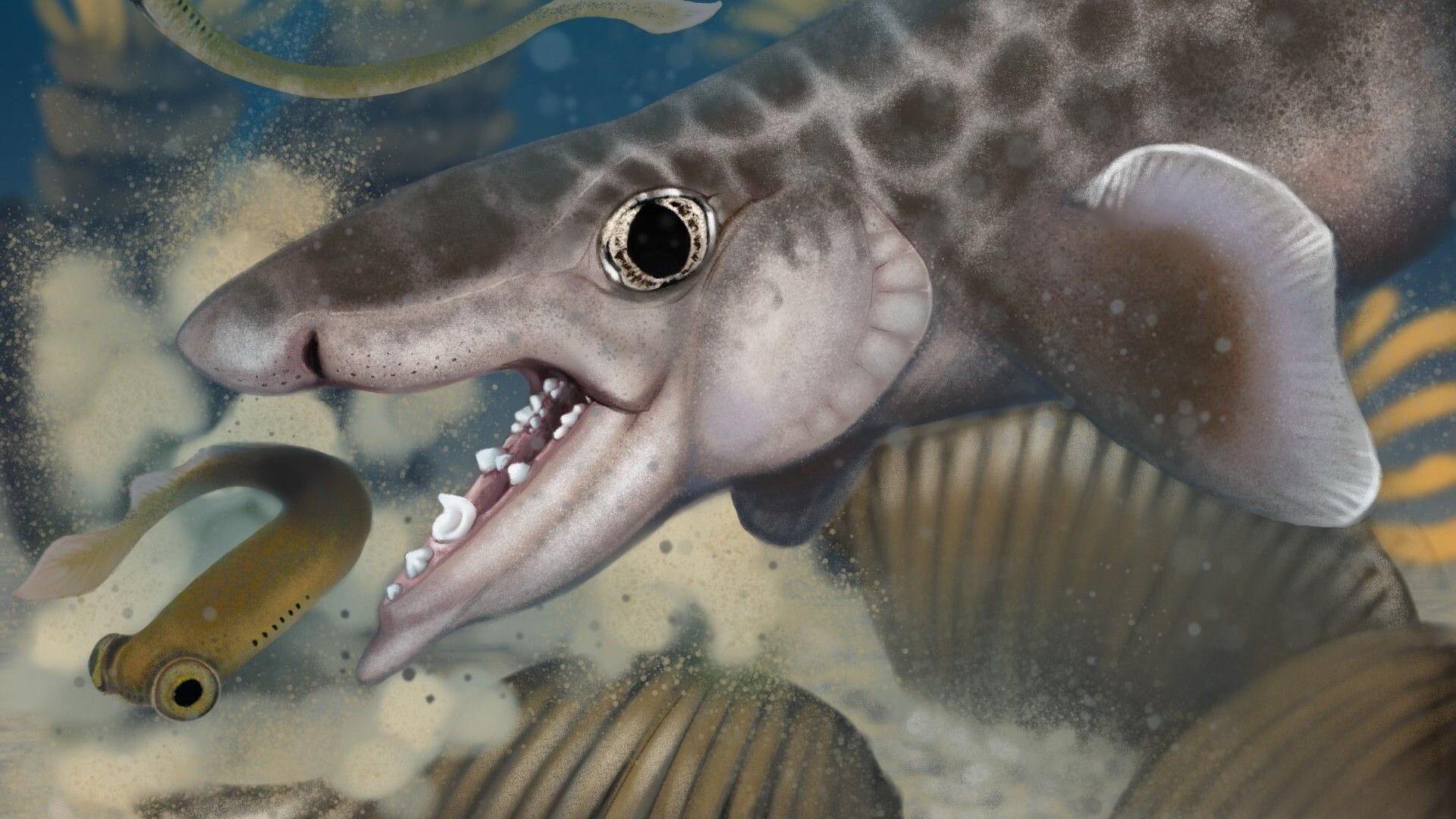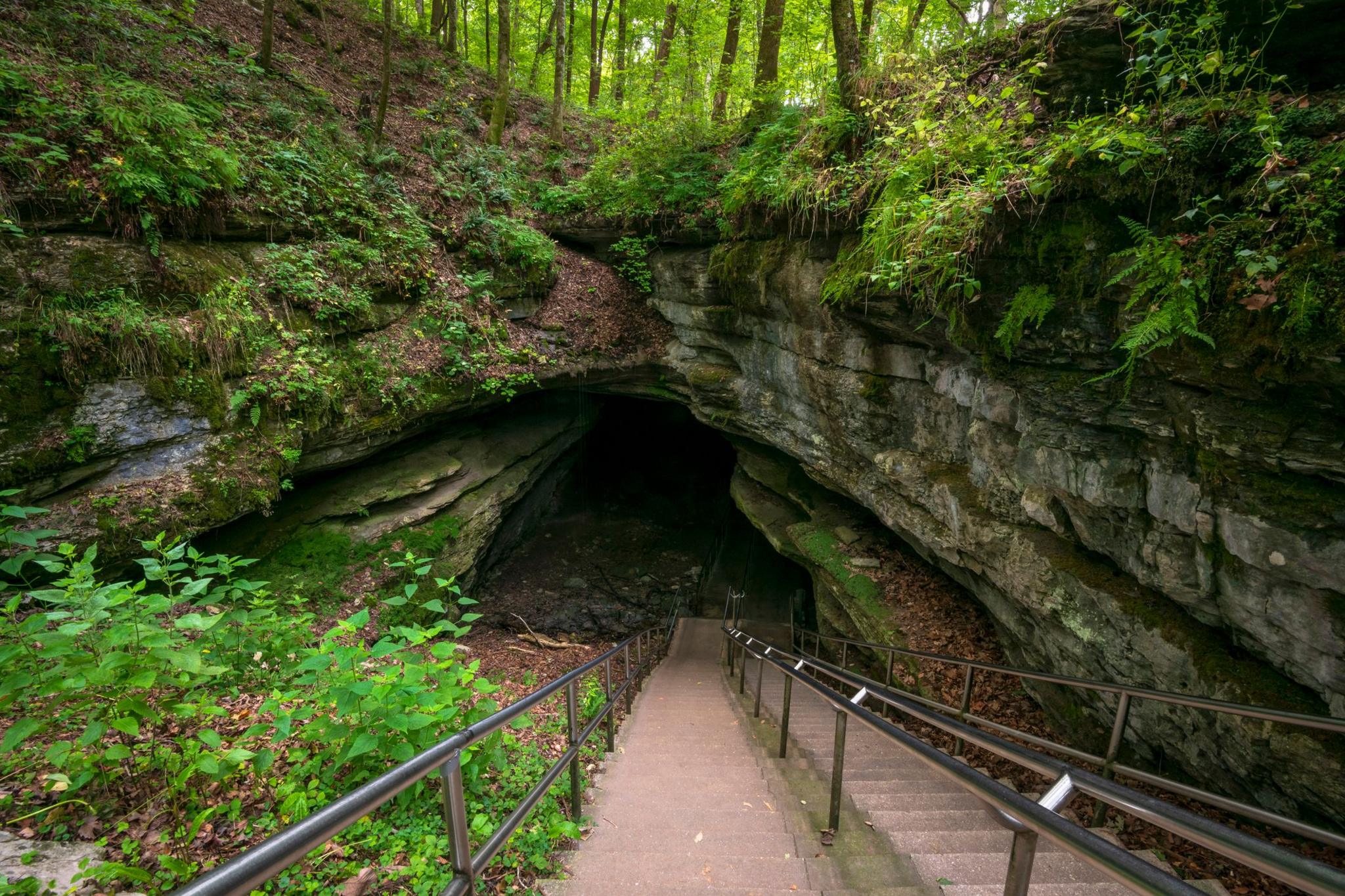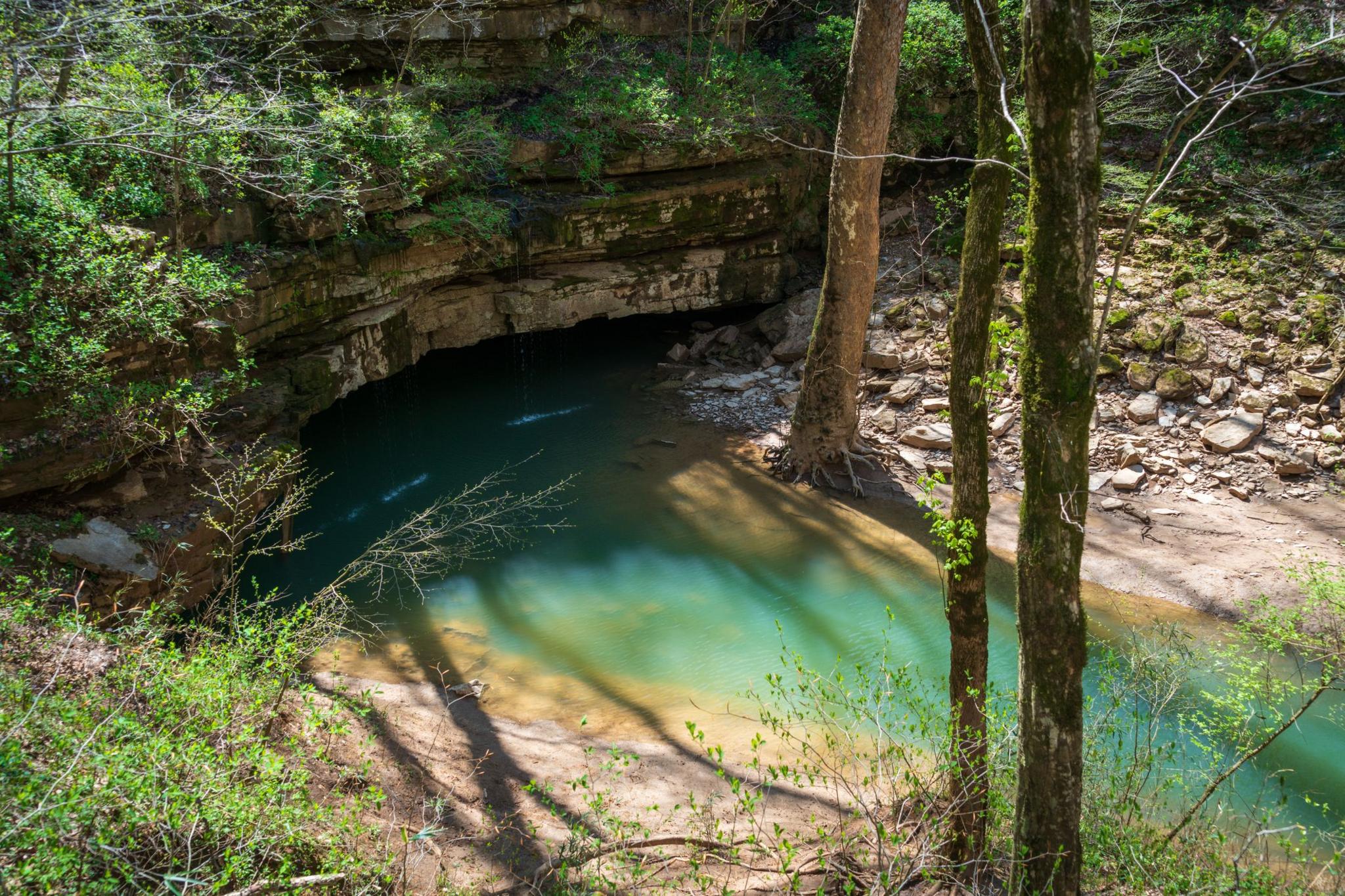New species of ancient shark discovered in Kentucky, say researchers

An artist's impression of what the Macadens olsoni would have looked like
- Published
A new species of ancient shark has been discovered in Kentucky in the United States, according to researchers.
The species was identified from a fossil at Mammoth Cave National Park, which is home to other re-SHARK-able discoveries.
It's been named Macadens olsoni, with a spokesperson for the park saying it is "notable for its unique tooth whorl".
"This discovery is a remarkable addition to our understanding of ancient marine life and underscores the importance of preserving and studying our natural history," said Superintendent Barclay Trimble.
More stories like this
- Published28 July
- Published8 February 2024

Mammoth Cave National Park in the United States is home to the world's longest-known cave system
This shark was no giant of the sea.
Researchers say it would have grown to less than a foot long, about the length of the 30cm ruler you might use at school.
And it would have survived on a diet of worms and molluscs – yum!
The shark was named after the park where its fossil was found – Macadens references the park's name, Mammoth Cave.
It also takes part of its name – Olsoni – from retired scientist Rickard Olson, who helped organise research and identify shark fossils at the park.
What is Mammoth Cave National Park?

A river flowing through part of the cave
Mammoth Cave National Park is a UNESCO World Heritage site in Kentucky, in the United States.
This means it's one of over 1,200 landmarks across the world that is considered by the United Nations to have "outstanding universal value".
Mammoth Cave is the longest-known cave system in the world, with over 400 miles of the cave explored to date, according to the US's National Parks Foundation.
Millions of years ago, much of the cave was underwater and home to a variety of ancient creatures.
The Macadens olsoni is just one of the latest discoveries.
"This finding not only enhances our knowledge of ancient marine ecosystems but also emphasizes the critical role of paleontological research in our national parks," said Superintendent Trimble.
"Every discovery connects the past with the present and offers invaluable educational opportunities for students and the public."
